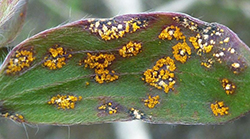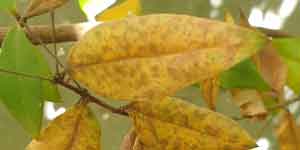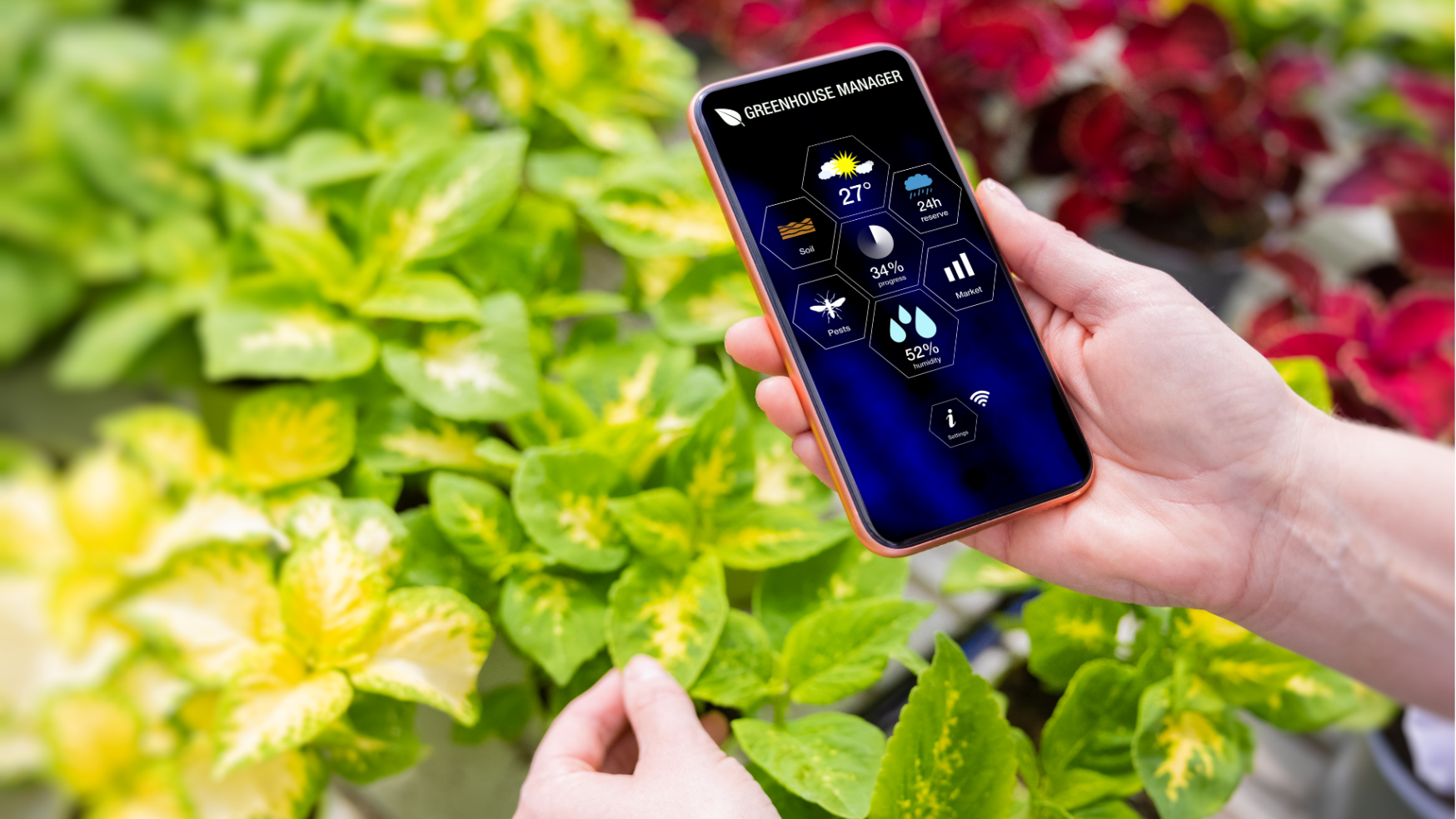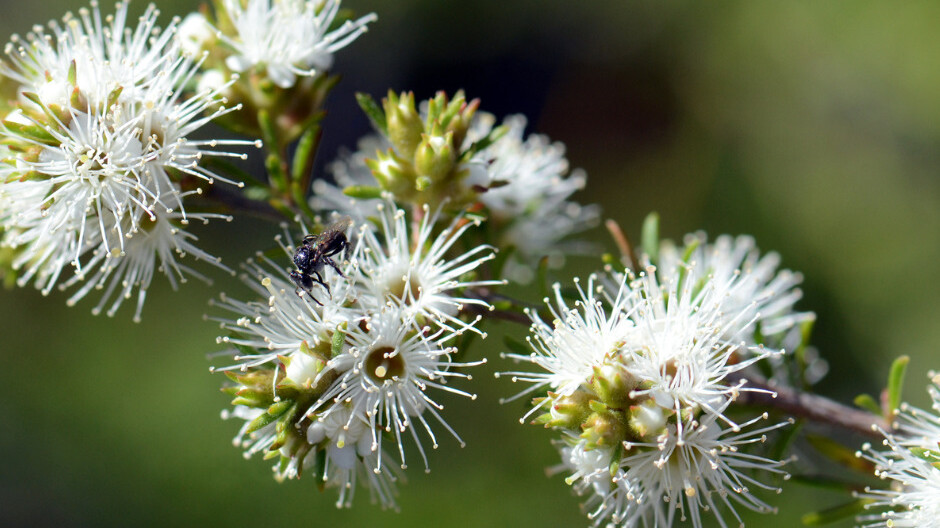Myrtle rust is a spreading problem in Australia. It is a fungus, Puccinia psidii, which affects plants in the family Myrtaceae.
While there are several species overseas, there is only one in Australia Austropuccinia psidii1. It was first seen in the central coast of NSW in 2010 and has since spread along from southern NSW to far north Queensland along the east coast of NSW. It is also in Victoria and Tasmania, Melville Island and the Northern Territory. It is in found in plant nurseries, private gardens, parks, reserves and plant nurseries.
This fungus is of special concern because, as well as being a problem in gardens, it is a threat of severe damage and even extinctions to the many Australian natives species which are members of the Myrtaceae family important in many native ecosystems. By 2020, 382 species were known to be infected 2.
Plants Affected
The NSW government states that the following plants are susceptible:
- “Eucalyptus species
- willow myrtle (Agonis flexuosa)
- turpentine (Syncarpia glomulifera)
- bottlebrush (Callistemon species)
- paperbark (Melaleuca species)
- water gum (Tristanis neriifolia)
- tea tree (Leptospermum species)
- lilly pilly (Syzygium wilsonii)” 3
Myrtle Rust also infects exotic ornamental plants e.g. myrtle, plants with edible fruit e.g. feijoa and guava and others used for spice e.g cloves and allspice.
How Does it Spread?
Fungal spores can be borne by insects, animals (including humans), wind and water. They can be carried several kilometers by these means, but much further if transported on contaminated clothing, plants, vehicles or equipment. Germination of spores requires dampness, low light or darkness and mild temperatures (15 – 25°).
What Does It Look Like?

A few days after infection, bright yellow “dots” appear on leaves, flowers, fruits and shoots 3. The fungus penetrates plant cells to obtain nutrients and spots turn brown or grey causing leaves become brown and die (see image at top of this article). This may result in stunted growth and badly affected plants may die.
Control
There are severe impacts of myrtle rust since as well as affecting ecosystem integrity there are economic, social and cultural values. It will affect nursery and garden industries, regional industries including indigenous, recreation and tourism. This has led the Australian government to develop a National Action Plan (2). This plan seeks to raise awareness and to enable response to the threats by assessing impacts, addressing biosecurity issues and facilitating recovery.
Gardeners and land managers can take a range of actions to control this fungus. However, some may not be practical or possible depending on the size and number of infected plants or those likely to become infected. These possible actions are:
Prevention
- Become familiar with what myrtle rust looks like
- Remove plants that are likely to become infected
- Do not move plants that are infected
- In high- risk areas, launder clothes, hats and gloves after working with any plants
- inspect plants on a regular basis for any signs of myrtle rust – this includes plants which might be being considered for purchase. This is especially important in mild damp conditions in spring and autumn and, in some locations, in summer
- Disinfect tools and any equipment used – including mobile phones and glasses.
Dealing With Infected Plants
- Unfortunately, there is no real alternative to spraying with a fungicide since any attempt to remove infected
 plants inevitably involves risk of further spread. This should be done several days before trying to take any of the following actions
plants inevitably involves risk of further spread. This should be done several days before trying to take any of the following actions - Enclose infected small plants in plastic bags before sending to landfill
- If plants are large, chop them into smaller pieces and place in plastic bags. It is best to store such bags in a sunny location to solarize them which will destroy spores. Then send bags to landfill
- DO NOT PLACE ANY INFECTED PLANT MATERIAL, EVEN IF SOLARISED, IN GREEN BINS FOR COUNCILS TO TAKE AWAY!
Spraying With Chemicals
It is unusual for SGA to recommend using chemicals, but they are currently necessary to address the growing myrtle rust problem.
There are several fungicides registered for use with myrtle rust. It is best to seek advice from your local nursery about these. Like all chemicals, such fungicides have impacts on other species, so to help you make a wise choice, acquaint yourself with them using the SGA app WiseGardening which provides details.
References
- Australian Government. Department of Agriculture, Water and Environment. 2021.
- Makinson RO, Pegg GS, Carnegie AJ, (2020) Myrtle Rust in Australia – a National Action Plan, Australian Plant Biosecurity Science Foundation, Canberra, Australia. 2020.
- NSW Government. NSW Department of Industry. Myrtle Rust. 2022.
Related Articles:
Citizen Science: A Pathway to Gardening Success and Biodiversity Conservation
In recent years, the realm of science has experienced a remarkable transformation, one that invites people from all walks of life to participate…
Wildflower gardens – What’s the buzz about?
In the quest for sustainable and environmentally conscious practices, gardening enthusiasts and nature lovers alike are turning to a time-tested…
Climate Resilient Gardening
Introduction Gardeners in Australia are facing a race against time as they experience the growing impact of climate change in their own gardens. The…
Strawberries
I adore strawberries (Fragaria sp.), and one of my earliest memories is a birthday cake absolutely heaving under the weight of a sack full of home…




